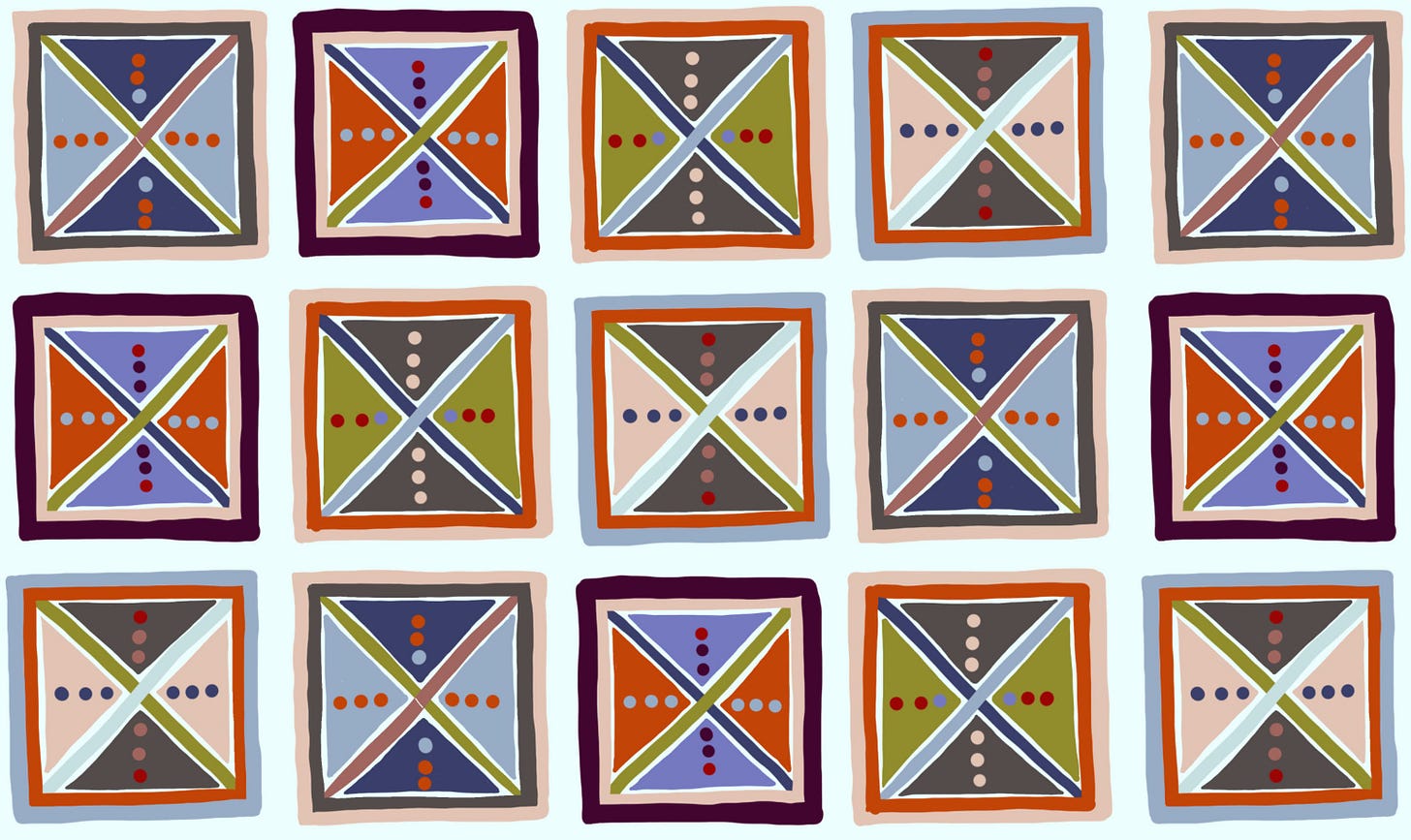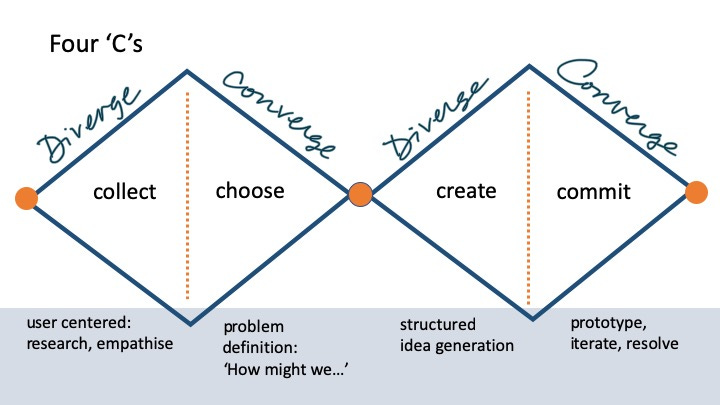During collaborative sessions like workshops or away days, you are taking people on a journey. You are usually travelling back and forth through two territories. The first is divergence, where you’re looking to get lots of diverse ideas and information. The second is convergence, where you’re trying to narrow things down to a specific idea or approach.
So many exercises, so little time
As I’ve noted before, there are many, many different exercises available for collaborating and designing workshops (see exercise resources in this post). But exercises come to life in a new way when you think about whether they help you diverge or converge.
Thinking back to the double diamond process typical for a ‘design thinking’ workshop, we clearly see diverging and converging territories. Divergence is in ‘collecting in ideas and information about a challenge’ and ‘creating ideas for a solution’. Convergence is in ‘choosing which challenge to work on’ and ‘committing to a solution through prototyping or storyboarding’. (Get an overview of design thinking workshops in this post).
Let’s take a look at the common exercises in these two territories.
Diverge <
We diverge when we’re looking for as much information, or as many ideas, as we can get. Often that’s helped by working individually or in small groups (learn more about the ‘silent & solo’ way of working in this post).
The classic exercise for collecting ideas is the sailboat (see it in action in the ‘retrospective’ section in this post), but you also might conduct stakeholder mapping, or a short expert interview that everyone uses to formulate possible ‘how might we?’ questions. Divergent exercises also include observing users in action (watching a user video) to identify key issues, or participants reviewing user data. This can happen in pairs or trios to help generate more insights and ideas.
The ‘create’ phase also calls for divergence, as participants try to come up with as many ideas for addressing a challenge as possible. These exercises are also often done individually to start, before everyone shares their results.
There’s a huge range of exercises that help with idea generation. (See an example of ‘bad ideas’ described in the ‘ideation’ section in this post). Many of the exercises play with some version of putting constraints on solutions, such as asking for ideas that could be deployed very quickly (e.g. in a week), or cost hardly any money.
Other ideation exercises, such as ‘forced connections’ or SCAMPER, ask for ideas that are related to a verb or a random object. ‘Forced connections’ asks participants to generate as many ideas as they can think of related to, for example, a carrot peeler or gardening gloves. SCAMPER asks participants to apply a set of modifying verbs to examine problems and solutions – what is the opportunity space when you Substitute, Combine, Adapt, Modify, Put to another use, Eliminate, Rearrange?
Converge >
We converge when we bring people together around an idea or an approach, which usually happens when we’re choosing or committing to ideas. Convergence exercises are often done ‘as a group.’ One exercise is clustering or theming ideas that people produced in the ‘collect’ phase. There are a number of exercises for choosing ideas to work on in the rest of the session, for example through dot voting (check out this post to find out if you are making mistakes with dot voting).
The other time we converge is when we’ve selected an idea to develop – the ‘commit’ phase. In this phase we use exercises to examine the most viable, highest priority ideas. Exercises could include:
Creating key Personas (learn about personas for partnerships in this post) or journey maps for the most important users
building a low fidelity prototype
Developing a story board for the most plausible project(s). See a storyboard I use in this post.
Using collected information to formulate or refine a ‘how might we’ challenge statement. See the principle of the ‘how might we’ question in the second part of this post.
Running final prototypes or storyboards through an ‘effort/impact’ matrix (see an effort/impact matrix in action in this ‘anatomy of a workshop’ post).
Sometimes a workshop will only tackle one territory or the other. You might have an energising workshop where you explore many diverging ideas and leave with a sense possibilities. By contrast a convergent workshop would take participants through developing testable solutions; they’d leave with a sense of accomplishment or result. Combining both territories into one workshop is very powerful!
Use the comments below to share your experiences with the territories of divergence and convergence in collaborating for innovation.




